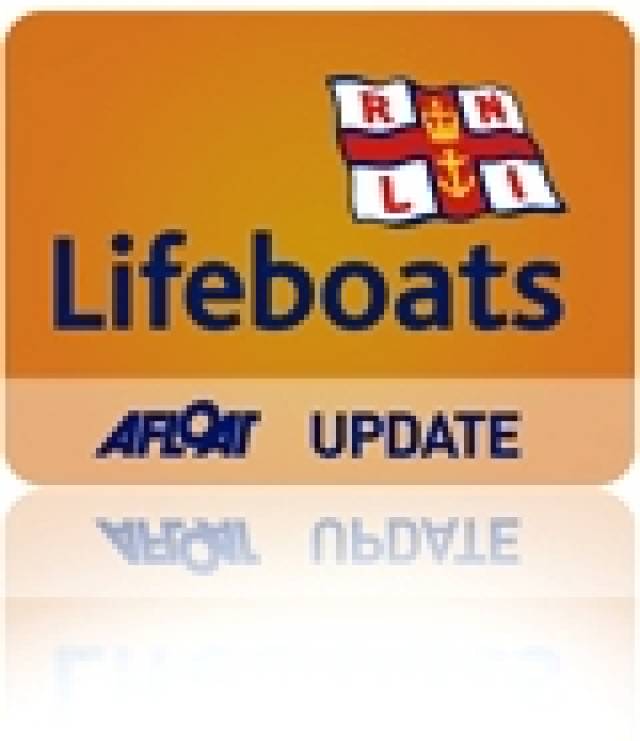#rnli – Lifeboat crew with Larne RNLI took their new D class lifeboat out on its first exercise to Brown's Bay last night (Thursday 23 July) following its arrival at the station. The lifeboat is to be named Terry and replaces the Hannahbella Ferguson inshore lifeboat, which was on service at the station from August 2005 to the present.
The new lifeboat has been funded through a Trust named The Pistol Fund, which was set up in memory of Theresa (Terry) and Fred Pistol. Fred was a Viennese survivor of the Holocaust and arrived in England at the age of 19. He lived for a while in the Isle of Man and eventually became a Major in the army. He was also a keen sailor and encouraged his whole family in his passion for sailing. Every boat Fred owned was named Terry in honour of his wife and the new lifeboat will carry on this tradition.
The new lifeboat will be officially named in Larne at a ceremony on the 19th of September, the same date as Fred's birthday and large crowds are expected to attend along with members of the Pistol family.
The previous D class lifeboat, Hannahbella Ferguson, was launched 97 times on service and brought 68 people to safety. The donor of that lifeboat was a family from Islandmagee, which maintained a strong connection to the lifeboat station and a deep interest in the work of the lifeboat and its crew.
Allan Dorman, Larne RNLI Lifeboat Operations Manager said: 'We are grateful to the Pistol Trust for the generous gift which has funded our new lifeboat. Obviously we are sad to see Hannahbella go but she gave us ten years of great service and I hope the donor family are justifiably proud of that record. We will be the custodians of this new lifeboat and will remember Fred and Theresa through the work of the lifeboat and its volunteer crew, who I know will go on to rescue and save many lives in the years ahead.'
Trying out the new inshore lifeboat for the first time this week Larne RNLI Helm Scott Leitch added, 'The new lifeboat handled very well on its first exercise. We went up to Brown's Bay and put it through its paces and it was excellent on the water. We look forward to many successful services with Terry over the next ten years.'
The D class lifeboat is often referred to as the workhorse of the RNLI. The inflatable craft is highly manoeuvrable and specifically suited to surf, shallow water and confined locations – often working close to cliffs, among rocks or even in caves.
The D class has a single 50hp outboard engine and can be righted manually by the crew after a capsize. Equipment includes fitted and hand-held VHF radio, night-vision equipment, and first-aid including oxygen. It can carry three crew members and five survivors.
First introduced in 1963, the D class design has continued to evolve and the latest version was introduced in 2003.































































